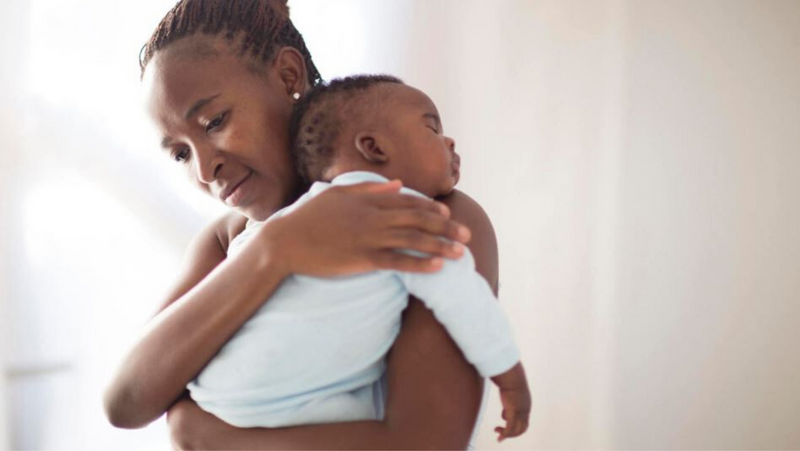Elimination communication—sometimes referred to as natural infant hygiene—is a method of toileting your child (the “elimination” part) that relies on becoming in tune with your baby’s pee and poop cues (the “communication” part).
WHAT IS ELIMINATION COMMUNICATION?
EC works by learning the times of day and the signals your baby sends when they are about to pee or poop, and then you bring them to a toilet, potty, or any designated container, and then let them release their waste.
Some parents do this for every pee and poop, but it’s common for parents to do this part-time and rely on diapers for at least some of the day. For example, a parent might choose to “catch” their baby’s poops only — or just catch the morning, afternoon, and early evening pees and poops, relying on diapers at night.
Elimination communication may sound absurd to some, especially if this is your first time considering it. But the fact is that elimination communication has been around for centuries and is how most of the world dealt with baby elimination before the invention of modern disposable diapers.
“EC is not a new concept,” writes Dr. Jeffrey Bender and Dr. Rosemary She in Pediatrics. “Humans have been doing this for millennia and still do in most resource-limited regions. As little as 3 to 4 generations ago, most Americans did as well.”
HOW DOES ELIMINATION COMMUNICATION WORK?
Okay, you’re probably wondering how exactly elimination communication works. Well, it’s different for every family, but in most cases, all you have to do is observe your baby, notice when they typically pee and poop, and then act accordingly.
Here’s are some tips that have worked for many families:
Timing
Many babies pee upon waking up in the morning or from a nap. Babies also tend to go after feeding. So what many parents do is they routinely bring their baby to the potty upon waking and/or after feeding.
Cueing
Some parents will make a sound like “shhhhh” or ring a bell when their baby uses the potty. Soon, the baby begins to associate those cues with peeing or pooping and will consistently use the potty when hearing these cues.
Logging
Some parents create a log of when their babies tend to need to go, jotting down timing and signals from their baby for a few days so that they can begin to understand the broader picture of their baby’s elimination needs.
Signaling
Many parents rely heavily on a baby’s signals regarding pottying. Often babies will squirm a little before they are ready to eliminate. They might pause what they are doing, or make a particular face. Parents can become tuned into these signals and begin to understand their baby’s potty needs more completely.
WHAT ARE THE BENEFITS OF ELIMINATION COMMUNICATION?
There are so many benefits to elimination communication! Here are a few:- No need to carry around bulky diapers or supplies
- The most sustainable, environmentally-friendly choice
- Gentler on baby’s skin than most diapers
- A great opportunity for parents to learn to read baby’s cues
- Fosters close bonding and attachment
- Saves you money
- Many parents say independent potty training is a breeze after elimination communication!
WHEN TO START ELIMINATION COMMUNICATION?
Most experts recommend starting elimination communication soon after birth, before babies begin to associate elimination with wearing diapers. You’d be surprised at how many instinctual cues newborns can give about their elimination needs.
At the same time, there is no harm with starting elimination communication when your baby is several months old or even when they are toddlers. Babies are little sponges when it comes to learning, adapting, and communicating. All you have to do is try, and you can quickly make headway in your elimination communication journey, whenever you start.
CAN I DO ELIMINATION COMMUNICATION PART TIME?You can absolutely do elimination communication part-time! The beauty of elimination communication is that there are no hard and fast rules. It’s all about what works for each family.
If you are a working mom or dad, for example, you may not feel comfortable having your baby’s caretakers participate in elimination communication. So maybe you’ll just do the morning and evening pees and poops with your baby and have them wear diapers when you are not there. Many parents prefer to use diapers when they aren’t home, or during the middle of the night. It’s all about doing what works for you.
Whether or not you do elimination communication when your baby is young, almost all of us do some form of it when we are potty training a child. Having your potty training child stay diaper-less for a few days (preferably outside!) is one of the most tried-and-true ways for your child to gain a better understanding of their elimination needs and get used to successfully using the potty.
THE BOTTOM LINE
Parenting approaches like elimination communication often get a bad rap because people think of them as “all or nothing” or extreme styles. The truth is, elimination communication isn’t so much a “method” as a fresh and often helpful way of looking at the baby and toddler elimination. And whether or not you adopt the method full-time, part-time, or even at all, we all could learn from paying deeper attention to baby’s needs and cues, and allowing them a little more autonomy when it comes to peeing and pooping.
Irritated bottom, learn more about our organic Diaper Balm?



